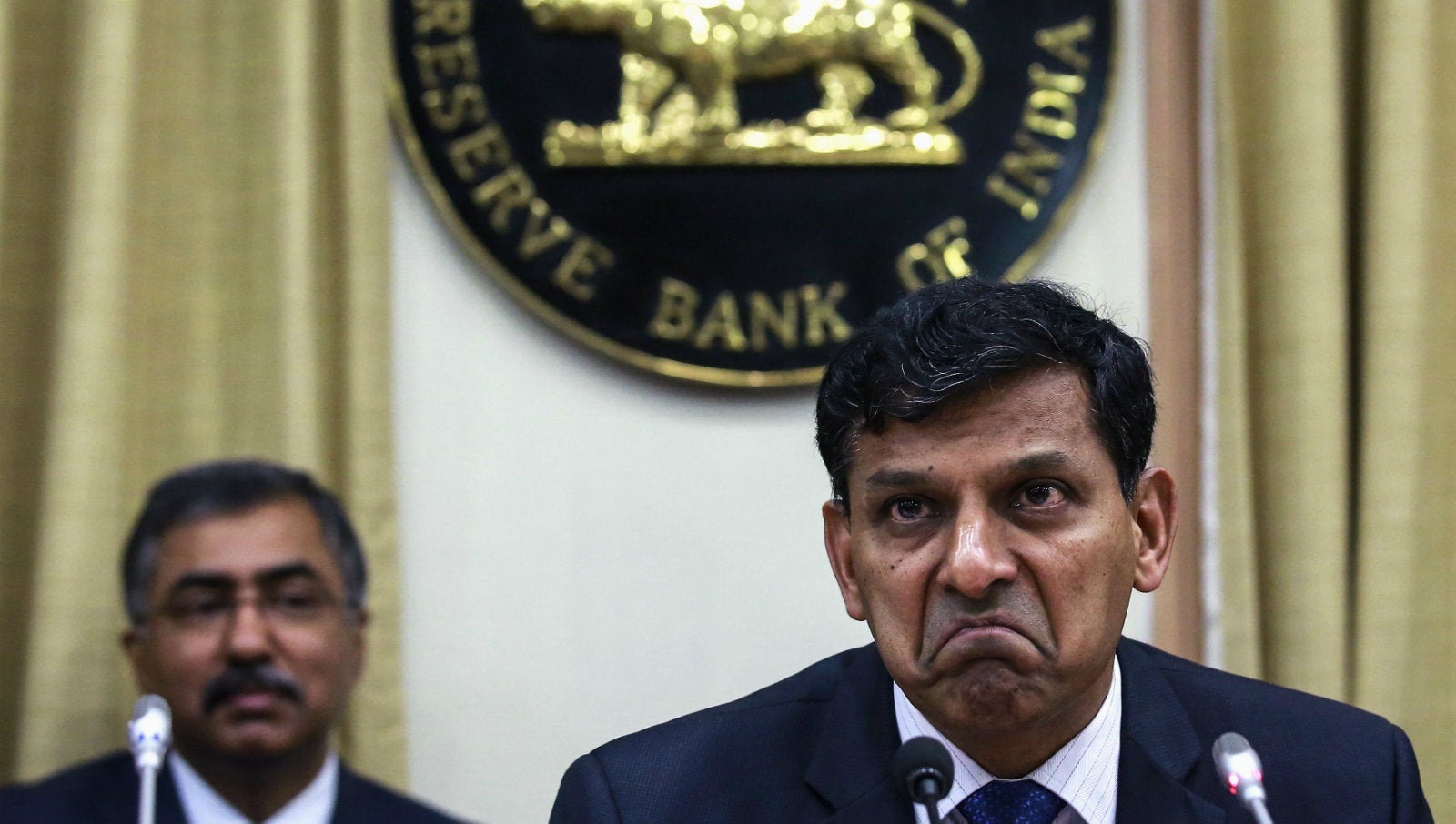The mind-boggling numbers that Raghuram Rajan must deal with to guide the Indian economy
Raghuram Rajan has a tough job.


Raghuram Rajan has a tough job.
Setting interest rates in a country where data is hard to gather—and often baffling when available—can be a supremely frustrating task for the governor of India’s central bank.
Take, for instance, today’s (June 7) monetary policy review. To decide where interest rates are headed, Rajan will look at a sea of contradictory economic data. Some indicators show that an interest rate cut is needed, others show it can wait.
If Rajan cuts the repo rate—the rate at which RBI lends to commercial banks—it will reduce financing costs and increase money supply, which could boost demand. If he hikes the rate, then the cost of borrowing for industries and individuals goes up.
Rajan last cut the repo rate to a five-year low on April 05.
While crucial numbers like the GDP indicate that a rate cut is not really needed, other data points like industrial production and bank credit show that lower interest rates would help.
GDP
The GDP numbers seem to indicate that all is well with the Indian economy. With such a steady growth trajectory, there isn’t really a need for a rate cut.
Industrial production
But, industrial production is still slack. So, if Rajan cuts rates, companies can access funds at a cheaper rate and this will boost activity.
Capacity utilisation
Factories aren’t running at their full capacity.
A survey (pdf) of more than 1,000 manufacturing companies, released by RBI in April, shows that capacity utilisation—the measure of output of an installed facility—is still low and falling. This means Rajan might want to cut rates.
Retail inflation
But inflation suddenly inched up in April. Retail inflation rose to 5.4% that month. Coupled with drought conditions in some parts of the country, it could be a potential driver for a rate hike.
Interest rate cuts and hikes are typically used to control inflation. An increase in interest rates shrinks money supply and pulls down demand. This brings down inflation.
New orders
New orders for companies have seen a drop in the third quarter of the 2016 financial year, according to the RBI survey (pdf). This is yet another indication that demand is low, and cutting rates would help in this case.
Exports
Additionally, exports continue to fall. Lower rates might help exporters to ramp up operations by getting access to cheap funds.
Bank credit
The bank credit outstanding as of April, is lower than in the previous month, according to RBI data. This means industries and individuals aren’t borrowing. Lowering rates could help boost bank credit growth.
Consumer sentiment
Lastly, Indian consumers believe their expenses are going to increase in the coming months. According to another RBI survey of some 5,404 households across 18 Indian cities, 89.5% of the respondents said the general price level will increase in the next one year.
“Daily workers, unemployed and students, and housewives have comparatively higher inflation expectations for three-month ahead period based on median inflation rates,” the survey said.
This means hiking rates won’t be a favourable solution.
This is what we call, a mixed bag. And now it is up to Rajan to sort the mess.